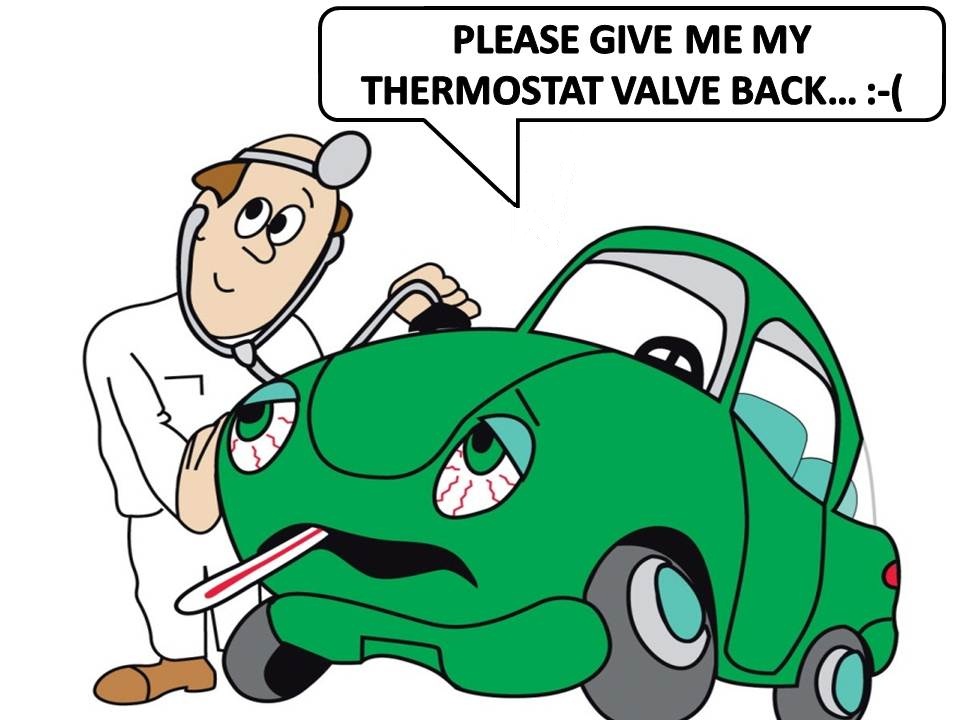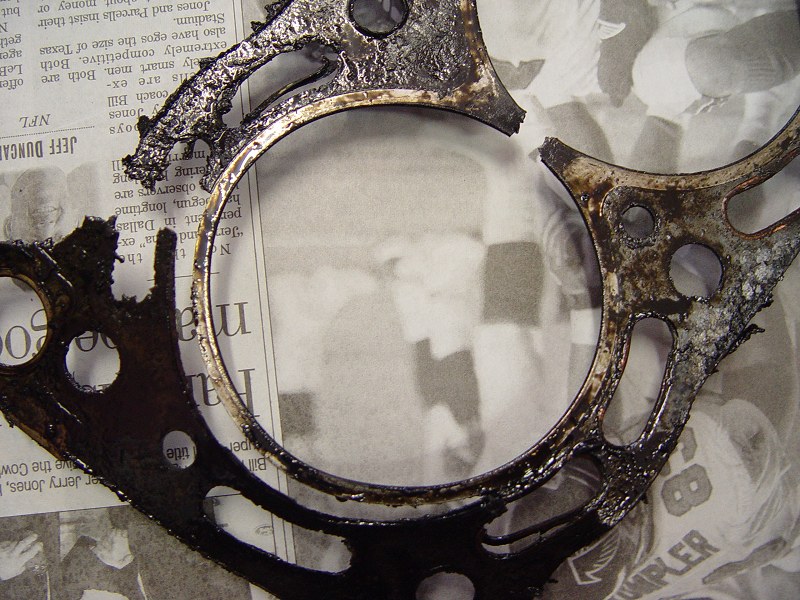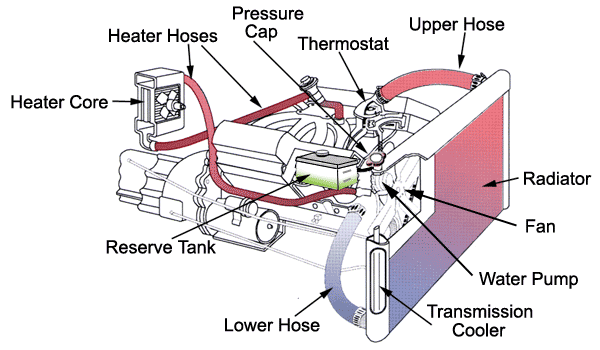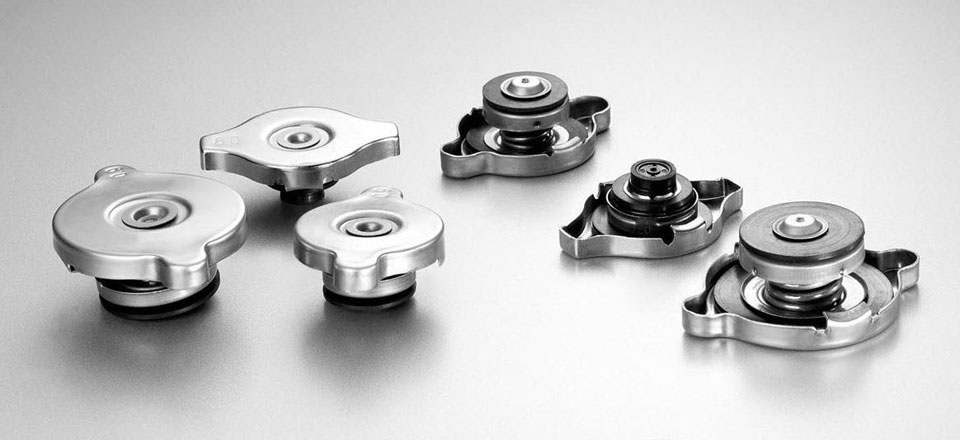Why Removing Your Car’s Thermostat Valve is a Really Bad Idea!
I have come across enough number of innocent and dissatisfied car owners over the years who have bought into their mechanics’ ideology that removing car’s thermostat; in most cases after a recently blown head gasket; will ensure that it “runs cooler”. Some even get it removed right after buying their brand new cars from a showroom. Let me explain in easy-to-understand terms why this move is a disaster not only for your car but also for your pocket in the long run.
A little insight:

Thermostat valves are designed to open at a specific temperature (mostly between 85 to 95 degrees Celsius). This makes sure that coolant does not run through the radiator until the engine has attained its optimum operating temperature. Engine running at an optimum temperature not only gives greater performance due to decreased engine oil viscosity resulting in better oil flow through tight engine clearances and less viscous drag but also far greater fuel economy as a result of it. As long as the engine does not reach operating temperature, the oxygen sensor remains in open loop; which essentially means that the ECM is dumping much more fuel into the combustion chambers in order to compensate for the cold engine temperature. As the engine heats up, pistons and rings expand, making a much tighter seal with the cylinder walls resulting in better compression which results in increased engine performance and far more power for lesser fuel as compared to when the engine was cooler.
 As the engine reaches operating temperature, fuel required for producing the same torque as when the engine was cold becomes far lesser and driving experience becomes much more enjoyable as the engine becomes more responsive and ECM adjusts the entire system according to the new temperature readings. This happens because modern engines and ECM operating systems are designed while tightly monitoring the thermal curves of the physical material used in running metallic parts of the engine in terms of their thermal characteristics.
As the engine reaches operating temperature, fuel required for producing the same torque as when the engine was cold becomes far lesser and driving experience becomes much more enjoyable as the engine becomes more responsive and ECM adjusts the entire system according to the new temperature readings. This happens because modern engines and ECM operating systems are designed while tightly monitoring the thermal curves of the physical material used in running metallic parts of the engine in terms of their thermal characteristics.
Simple recipe for disaster:
If a car owner is running water (even tap water) in the radiator instead of factory recommended coolant, the water will gradually eat up on the metal plates of the head gasket around the combustion chambers on the cylinder head. Additionally, all the minerals available in case of tap water will form a thick crust of metal on the walls of the cooling system all over, destroying the efficiency of the cooling system. With the passage of time, the corrosion of head gasket as well as decreased efficiency of cooling system due to mineral deposits will turn so bad that a hole will be blown through the head gasket metal plates resulting in a direct flow of coolant into the combustion chamber and blow-by gases from combustion chamber into the cooling system. This is the point where our genius mechanics jump in.

Wrong remedy results in more pain:
A vast majority of our mechanics simply take the thermostat valve out of the cooling system after replacing the head gasket in order to make sure that engine “runs cooler”. Let’s bust this myth right here. When thermostat valve is removed, the flow of coolant through the radiator is unrestricted. Let me say it again, it’s UNRESTRICTED. This means the coolant is flowing through the radiator all the time with far higher flow rate than it would normally do with a thermostat installed because flow through the thermostat is not unrestricted even when it’s “open” due to the design of the thermostat body.
To top things up, the radiator fan is made direct as well. As a result, engine runs cooler for a long time in the start which destroys performance, fuel economy as well as making sure that excessive wear and tear takes place for a long time since engine oil would take longer to reach optimum viscosity that would ensure better flow through the tight engine clearances of modern engines plus more power loss due to viscous drag of cooler, thicker oil. Also, the oxygen sensor would get fouled due to prolonged rich running in the start making sure that your vehicle turns into a gas-gulping monster.
Let’s burst some bubbles:

Once the engine eventually reaches operating temperature in this scenario (yes, it will eventually reach operating temperature even in this scenario), the coolant continues to freely flow through the radiator and even with the radiator fan turned on, coolant simply does NOT stay in the radiator for long enough to be cooled down. As a result, hot coolant just keeps on getting hotter and hotter and a time comes when the head gasket gets blown again due to overheating as thermal expansion of metal beyond optimum limits blows the gasket seal. Yes, you heard it right. Overheating in this scenario is VERY real. I have seen enough vehicles suffering from this disease courtesy their previous mechanics to believe it as a fact beyond just internet forums and tech discussions. At this point, the mechanics would usually swear and curse the car manufacturers or bad mouth the part sellers and customers would buy into their thoughts, eventually ending up replacing the entire engine in most cases, only to start this circle all over again.
How to ensure this doesn’t happen to you:
Here are a few simple steps that you can take right now in order to avoid all these bad things from happening to your car.
- Run a good coolant. Most Japanese car manufacturers recommend a coolant that is a mixture of water and ethylene glycol along with some other trace compounds. The right coolant makes sure that your car’s head gasket never gets corroded again because there are advanced rust inhibitors in it that ensure no damage takes place to the metal parts in the cooling system due to the presence of water in it. I personally recommend 50-50 pre-mixed stuff.
- Make sure the right thermostat valve is in place and the radiator fan is not direct. This has been explained in detail above.
![radiatorcaps]() Make sure that your car has the right radiator cap. Radiator cap determines for how long the coolant stays in the cooling system before it is pushed out to the expansion tank. There are pressure controlled valves in the radiator cap that make sure coolant stays in the cooling system for just the right amount of time, heating up to a certain degree before it is allowed to escape into the expansion tank. Pressure controls the boiling point of the coolant so the right pressure means coolant in your cooling system will not boil at any point in time or over-pressurize the cooling system, ensuring trouble-free driving experience.
Make sure that your car has the right radiator cap. Radiator cap determines for how long the coolant stays in the cooling system before it is pushed out to the expansion tank. There are pressure controlled valves in the radiator cap that make sure coolant stays in the cooling system for just the right amount of time, heating up to a certain degree before it is allowed to escape into the expansion tank. Pressure controls the boiling point of the coolant so the right pressure means coolant in your cooling system will not boil at any point in time or over-pressurize the cooling system, ensuring trouble-free driving experience.- Always ask the mechanics about this scenario and if they advise removal of the thermostat, stay away from them for good because they don’t have the faintest of ideas how liquid cooled modern engines work.


 Make sure that your car has the right radiator cap. Radiator cap determines for how long the coolant stays in the cooling system before it is pushed out to the expansion tank. There are pressure controlled valves in the radiator cap that make sure coolant stays in the cooling system for just the right amount of time, heating up to a certain degree before it is allowed to escape into the expansion tank. Pressure controls the boiling point of the coolant so the right pressure means coolant in your cooling system will not boil at any point in time or over-pressurize the cooling system, ensuring trouble-free driving experience.
Make sure that your car has the right radiator cap. Radiator cap determines for how long the coolant stays in the cooling system before it is pushed out to the expansion tank. There are pressure controlled valves in the radiator cap that make sure coolant stays in the cooling system for just the right amount of time, heating up to a certain degree before it is allowed to escape into the expansion tank. Pressure controls the boiling point of the coolant so the right pressure means coolant in your cooling system will not boil at any point in time or over-pressurize the cooling system, ensuring trouble-free driving experience.